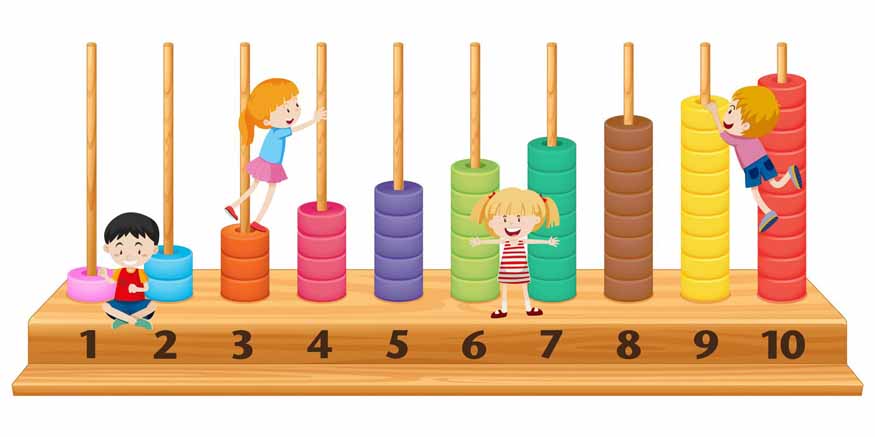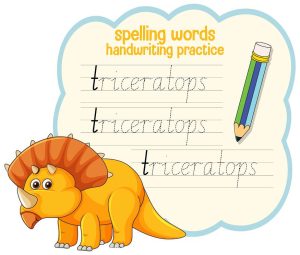Introducing Kids to the World of Abacus

While technology provides ease, it ignores the core cognitive processes required in learning. In this age of technology, the abacus stands out as an effective teaching tool. It can provide outstanding advantages for child development. It is a mental enhancement tool. The abacus helps in the learning of arithmetic operations. These operations can range from the very basic to the very complex.
Abacus learning is an essential component of school education. Teaching abacus to kids proves to be a valuable skill. It can improve their mathematical aptitude. Abacus maths also helps many kids develop an interest and passion for math by increasing their confidence and knowledge from a young age. In this blog, we will discover more about how to teach kids abacus and make them familiar with it.
What is Abacus?
The abacus is an old mathematical counting instrument. It is made up of two rows of movable beads attached to around 10-13 columns. It originated in the 16th and 17th centuries. With counters, binding, and wires, it has developed into a far more advanced form.
Teaching abacus can engage your kid in ways that digital tools cannot. It helps kids understand numbers and develop a stronger understanding of mathematical concepts.
Abacus learning enhances kids in fundamental mathematics such as addition, multiplication, subtraction, and division. It also helps in the precise counting of decimal points, negative numbers, and so on.
Step-by-Step Guide to Teaching Abacus
Abacus learning is essential for children, particularly in the early stages of life. It contributes to the development of hand-eye coordination and other cognitive abilities. From teaching kids numbers to calculating cube roots, the abacus has many applications. Let us understand a step-by-step approach to teaching abacus;
- Introduction to the Abacus
- Counting
- Teach Place Value
- Advanced Arithmetics
- Mental Abacus
You can start by introducing your kid to the abacus and describing its use in mathematical calculations. Introduce them with their components like the frame, rods, higher beads (worth 5), and lower beads (worth 1). Kids can understand the bead movement better by handling the abacus by themselves. Teach how the rods show place values (units, tens, and hundreds), as well as how the separation bar divides the beads.
For counting from 1 to 10, you need to arrange the beads to the left side. Then, separate one bead on each row and push it to the right. Count each bead which gives a total of 10.
For counting from 1 to 100, push all beads to the left. Slide one bead at a time on the first row from left to right, counting to 10. Then, repeat on the next row for 11-20, and continue row by row until reaching 100.
This simple method introduces your child to counting on an abacus. It helps your child remember numbers.
Begin by moving 10 beads to the right on the last row of the abacus. Then, using only one bead on the right in the second-to-last row (the tens row), prove that 10 beads in the ones row equal 1 bead in the tens row. Arrange 10 beads in 10 rows to show how 10 tens equal 100. With the abacus, your kid will learn that 10 beads on the hundredths’ row equals 1 bead on the thousandths’ row.
Teach your kid to add and subtract using several digits. You can show them how to carry over for addition (e.g., 9 + 5) and borrow for subtraction (e.g., 13 – 4). Practice with bigger numbers and make sure your kid moves the beads for each place value.
Then, introduce them with multiplication and division. You can show multiplication as repeated addition on the abacus. Explain simple division as repeated subtraction and guide your kid through fundamental division problems.
Encourage your kid to visualize the abacus when performing mental abacus maths. Begin with easy problems before moving to the challenging ones. To enhance speed and accuracy, you can practice with them using flashcards, mini abacus, mental math apps, or time-bound exercises.
Things to Keep in Mind While Teaching Abacus to Kids
Your support and engagement may make a big impact if your kid is starting an abacus learning adventure. The following tips can help you assist your kid in their abacus learning process:
- Provide a Proper Introduction to the Abacus
- Use physical objects to help them understand
- Be Patient, Encouraging and Respect Your Child’s Pace of Learning
- Make it a part of their daily life
During the initial phase, the abacus can be a little difficult for children to use. To help them adjust, teach kids how to read and handle the beads to show numbers such as 5 or 6. Ensure they understand basic counting and bead alteration in abacus maths.
To help your kid picture what they are doing with the abacus for kids, use actual things to symbolize the numbers. For example, you may use ten stones to symbolize the number ten. Once they grasp how to count with actual objects, they will be able to apply their skills to the abacus.
Learning an abacus can prove challenging at first. You need to keep in mind that every child has their own pace of learning. It’s important to be patient and encouraging even when your child makes mistakes. You need to praise their efforts and appreciate their accomplishments.
Make sure that your child practices the abacus maths every day. Consistent practice is essential for developing and maintaining abilities acquired via abacus training. You can also add games and activities with abacuses to their playtime.
In conclusion, supporting your child’s abacus learning journey is a wonderful experience that could boost both their mathematical and cognitive abilities. You can assist your child in excelling in this important skill by sticking to a steady schedule and providing patient guidance. At Billabong High International School, we believe that mathematics is beyond numbers. It is a journey of discovery, exploration, and endless possibilities. To begin an amazing adventure full of learning, enrol now!








